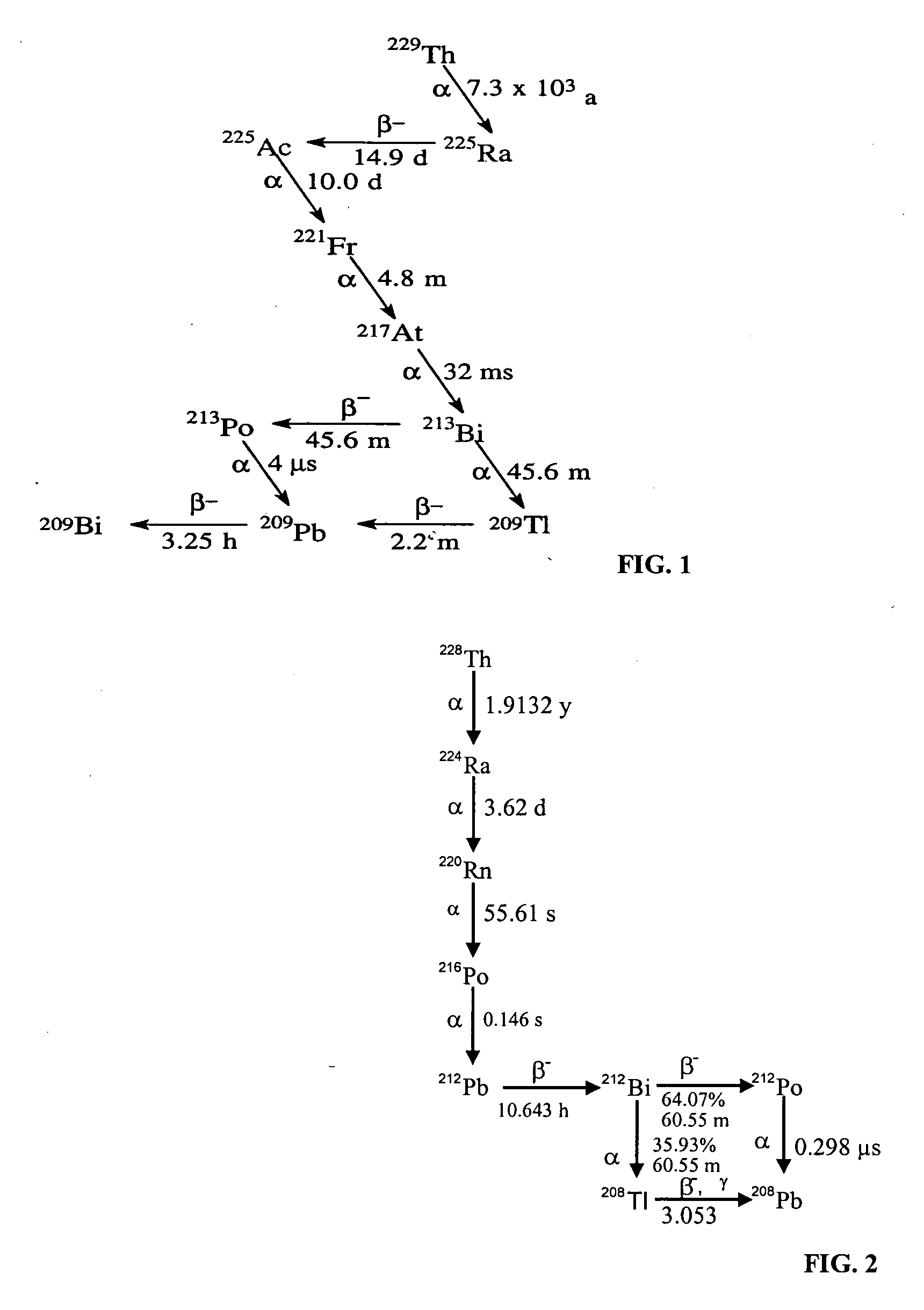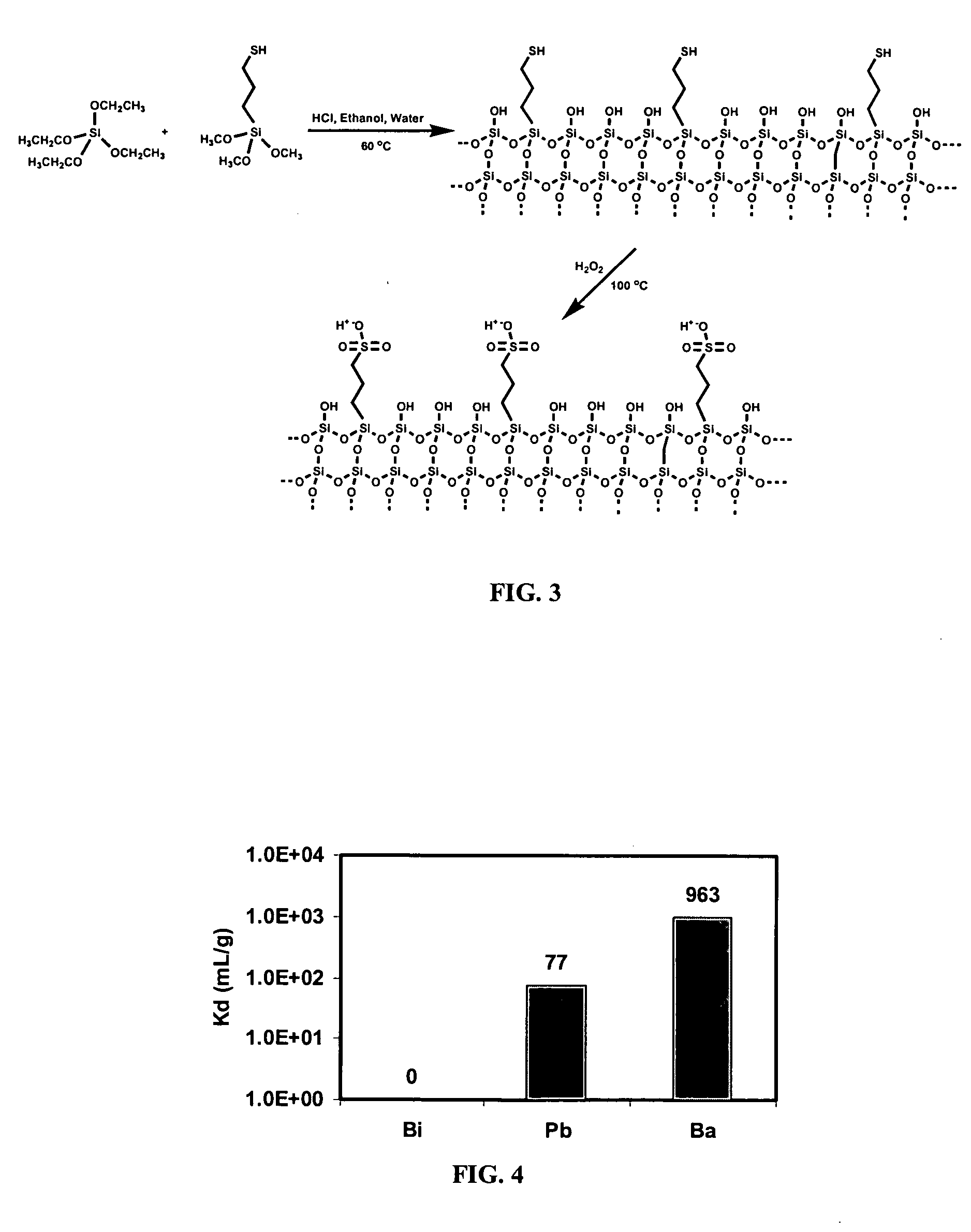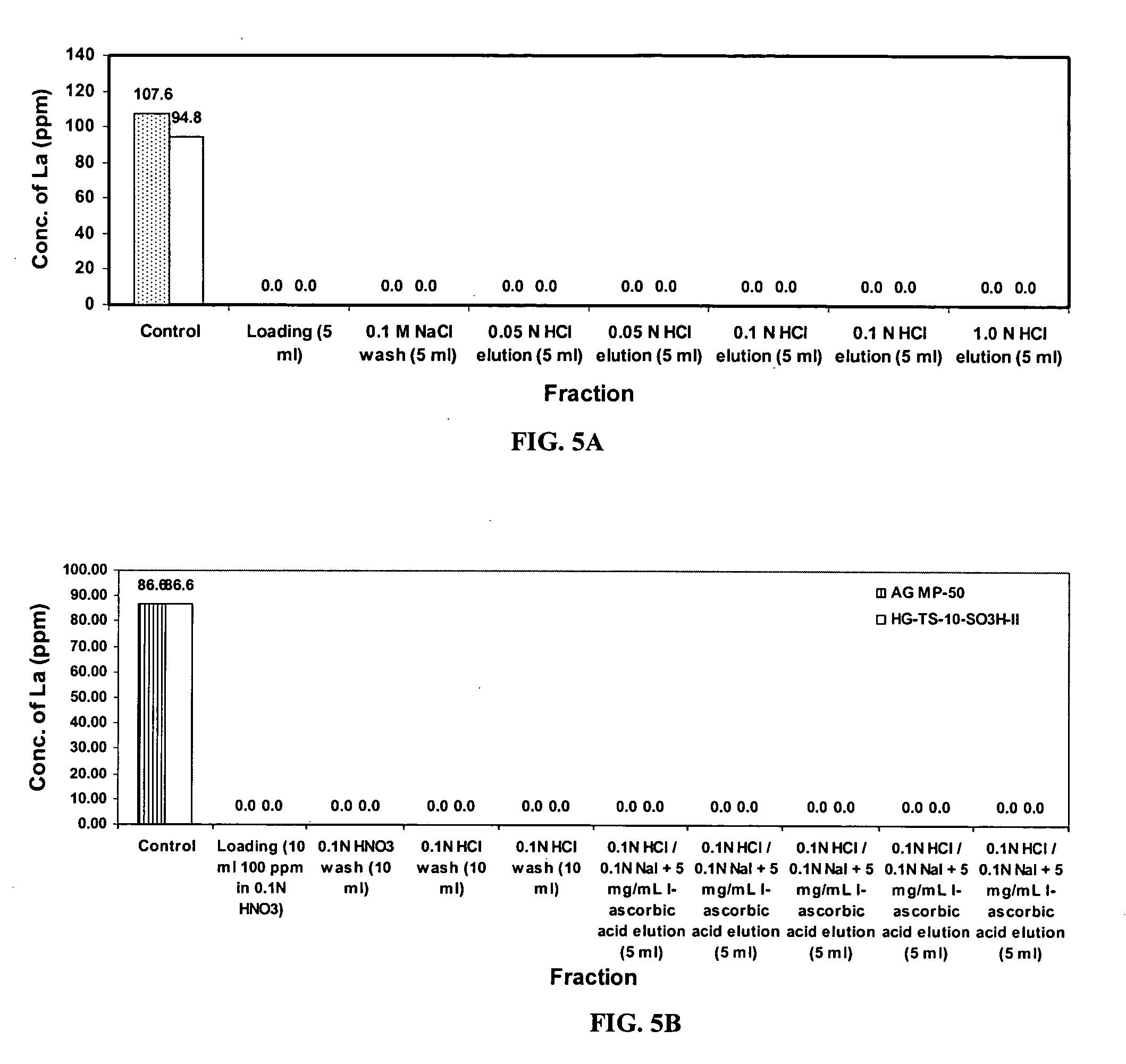212Bi or 213Bi Generator from supported parent isotope
a technology of parent isotope and generator, applied in the field of radionuclide generator, ion exchange material for radionuclide generator, can solve the problem of limited generator li
- Summary
- Abstract
- Description
- Claims
- Application Information
AI Technical Summary
Benefits of technology
Problems solved by technology
Method used
Image
Examples
example 1
Synthesis of Exchange Sorbent Having About 25% Sulfonato-Functionalized Silica
[0059] A hybrid silica based exchange sorbent was synthesized by adding 37.5 mmoles of tetraethyl orthosilicate (TEOS) and 12.5 mmoles of 3-mercaptopropyltrimethoxy silane (MPTS) to a solution of 15 mL of 66% aqueous ethanol and 1 mL of 6N hydrochloric acid at room temperature. This quantity of MPTS provides an exchange sorbent having about 25% sulfonato-functionalized silica. The reaction mixture was vigorously shaken for two minutes and then the solvents were evaporated at 60° C. for three hours. Upon evaporation, a transparent glass product, thiol-functionalized silica, was obtained in quantitative yields (˜5 g).
[0060] An acid catalyzed reaction is preferred because it produces material with significantly lower surface area when compared to that of base catalyzed reaction with the same amount of thiol-functionalization as show in Table 1.
TABLE 1BET specific surface area of some thiol-functionalized ...
example 2
Synthesis of Exchange Sorbent Having About 10% Sulfonato-Functionalized Silica
[0065] The hybrid silica based exchange sorbent was synthesized using the same method as disclosed in Example 1 except for changing the ratio of the TEOS to MPTS to yield a 10% sulfonato-functionalized silica product. The exchange sorbent was synthesized by adding 450 mmoles of tetraethyl orthosilicate (TEOS) and 50 mmoles of 3-mercaptopropyltrimethoxy silane (MPTS) to a solution of 150 mL of 66% aqueous ethanol and 10 mL of 6N hydrochloric acid at room temperature. The reaction mixture was shaken vigorously for two minutes and then the solvents were evaporated at 60° C. for 15 hours. Upon evaporation, a transparent glass product, thiol-functionalized silica, was obtained in quantitative yield (46.2 g).
[0066] The thiol-functionalized silica was then suspended in 30% hydrogen peroxide (200 mL) and heated at 90° C. while slowly stirring for 20 minutes. The final product obtained, sulfonato-functionalized s...
example 3
Binding Affinity of Surrogates on the Sulfonato-Functionalized Silica
[0067] Binding affinities of both radioactive and non-radioactive surrogates for actinium, radium, lead and bismuth were determined by finding the distribution coefficients of simulates. Distribution Coefficients (Kd values) were determined according to the following Equation 1:
Kd=((Ci−Cf) / Cf)*V / m (1)
[0068] where: [0069] Ci=initial activity (counts per minute (cpm) / mL) or concentration (ppm) in the solution [0070] Cf=final activity (cpm / mL) or concentration (ppm) in the solution [0071] V=volume of solution (mL) [0072] m=mass of the exchange sorbent ion exchanger (g).
[0073] About 50 mg of the exchange sorbent made according to the procedure of Examples 1 and 2 was mixed, by shaking for 24 hours in a HDPE scintillation vial, with about 20 mL of solution containing either a radioactive or non-radioactive surrogate (˜4 ppm) for actinium, radium, lead or bismuth. The solution had a pH of about 2.0-2.5 and was made ...
PUM
 Login to View More
Login to View More Abstract
Description
Claims
Application Information
 Login to View More
Login to View More - R&D
- Intellectual Property
- Life Sciences
- Materials
- Tech Scout
- Unparalleled Data Quality
- Higher Quality Content
- 60% Fewer Hallucinations
Browse by: Latest US Patents, China's latest patents, Technical Efficacy Thesaurus, Application Domain, Technology Topic, Popular Technical Reports.
© 2025 PatSnap. All rights reserved.Legal|Privacy policy|Modern Slavery Act Transparency Statement|Sitemap|About US| Contact US: help@patsnap.com



